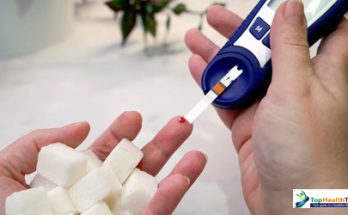Introduction
Vitamin D, often referred to as the “sunshine vitamin,” plays a crucial role in numerous physiological functions, including calcium metabolism, immune regulation, and cellular differentiation. In recent years, research has increasingly focused on the link between vitamin D and diabetes, a chronic metabolic disorder characterized by impaired glucose regulation. This article explores the intricate relationship between vitamin D and diabetes, shedding light on scientific evidence, mechanisms, and practical applications for better management of the disease.
Understanding Diabetes
Types of Diabetes:
- Type 1 Diabetes (T1D): An autoimmune condition where the immune system targets and destroys insulin-producing beta cells in the pancreas. It is usually diagnosed in childhood or adolescence.
- Type 2 Diabetes (T2D): Characterized by insulin resistance, where cells fail to respond to insulin effectively, along with a progressive decline in insulin secretion. It is more common in adults but is increasingly seen in children due to obesity.
- Gestational Diabetes Mellitus (GDM): A form of diabetes that occurs during pregnancy, increasing the risk of complications for both mother and child.
Key Symptoms of Diabetes:
- Excessive thirst (polydipsia)
- Frequent urination (polyuria)
- Unexplained weight loss
- Fatigue
- Blurred vision
- Slow-healing wounds
Complications of Uncontrolled Diabetes:
- Cardiovascular diseases (e.g., heart attack, stroke)
- Neuropathy (nerve damage)
- Retinopathy (eye damage leading to blindness)
- Nephropathy (kidney damage)
- Increased susceptibility to infections
Vitamin D: A Brief Overview
What is Vitamin D? Vitamin D is a fat-soluble secosteroid hormone involved in various biological processes. It is synthesized endogenously when ultraviolet (UV) rays from sunlight strike the skin and trigger the conversion of 7-dehydrocholesterol to cholecalciferol (vitamin D3). It can also be obtained exogenously through diet and supplementation.
Metabolism of Vitamin D:
- Liver Conversion: Cholecalciferol is hydroxylated in the liver to form 25-hydroxyvitamin D [25(OH)D], the primary circulating form used to assess vitamin D status.
- Kidney Activation: 25(OH)D is further hydroxylated in the kidneys to form 1,25-dihydroxyvitamin D [1,25(OH)2D], the biologically active form.
Sources of Vitamin D:
- Endogenous Production: Sunlight exposure (UVB rays)
- Dietary Sources:
- Fatty fish (e.g., salmon, mackerel, sardines)
- Cod liver oil
- Fortified foods (e.g., milk, orange juice, cereals)
- Egg yolks
- Supplements: Vitamin D2 (ergocalciferol) and D3 (cholecalciferol)
The Scientific Link Between Vitamin D and Diabetes
1. Mechanisms of Action:
- Insulin Secretion:
- Vitamin D receptors (VDR) are present in pancreatic beta cells, which produce insulin.
- Active vitamin D enhances insulin secretion by promoting calcium influx, a crucial step in insulin exocytosis.
- Insulin Sensitivity:
- Vitamin D modulates insulin receptor expression and improves glucose uptake by skeletal muscle and adipose tissue.
- Immune Modulation:
- Vitamin D regulates T-cell activity, reducing pro-inflammatory cytokines that contribute to insulin resistance and beta-cell destruction.
2. Epidemiological Evidence:
- Studies consistently show an inverse relationship between vitamin D levels and the risk of T2D.
- Individuals with 25(OH)D levels below 20 ng/mL are at a higher risk of developing both T1D and T2D.
- Maternal vitamin D deficiency has been associated with an increased risk of GDM.
3. Clinical Trials:
- Supplementation with vitamin D has been shown to improve glycemic control in patients with T2D, reducing HbA1c levels and fasting blood glucose.
- In T1D, higher vitamin D levels are associated with a reduced risk of disease onset and progression.
Benefits of Vitamin D in Diabetes Management
1. Glycemic Control:
- Enhances insulin secretion and sensitivity, leading to better blood glucose regulation.
- Reduces HbA1c levels, a marker of long-term glucose control.
2. Reduction in Complications:
- Protects against cardiovascular complications by reducing inflammation and endothelial dysfunction.
- Mitigates the risk of diabetic neuropathy and retinopathy by reducing oxidative stress.
3. Immune Regulation:
- Lowers the risk of autoimmune beta-cell destruction in T1D.
- Reduces chronic inflammation associated with insulin resistance in T2D.
4. Bone Health:
- Diabetes increases the risk of osteoporosis; vitamin D ensures adequate calcium absorption and bone mineralization.
Strategies to Optimize Vitamin D Levels
1. Sunlight Exposure:
- Spend 15-30 minutes outdoors daily, ensuring direct sunlight exposure on the skin.
2. Diet:
- Incorporate vitamin D-rich foods into your meals:
- Fatty fish
- Fortified dairy products
- Mushrooms exposed to UV light
3. Supplementation:
- Recommended daily intake:
- Adults: 600-800 IU (may vary based on age and health status)
- Higher doses may be needed for deficiency correction (consult a healthcare provider).
4. Regular Monitoring:
- Measure serum 25(OH)D levels to ensure adequacy (>30 ng/mL).
- Adjust supplementation and lifestyle changes accordingly.
Table: Impact of Vitamin D Supplementation on Glycemic Markers
| Study | Participants | Intervention | Outcome | Conclusion |
|---|---|---|---|---|
| Pittas et al. (2010) | 92 T2D patients | 2000 IU/day Vitamin D3 | Reduced HbA1c and fasting glucose | Improved glycemic control |
| Nagpal et al. (2009) | 100 Prediabetics | 1200 IU/day Vitamin D3 + Calcium | Delayed progression to T2D | Preventive potential |
| Chiu et al. (2004) | 126 Adults | Vitamin D + Calcium | Improved insulin sensitivity | Promising adjunct therapy |
Challenges and Considerations
1. Vitamin D Deficiency:
- Common in individuals with limited sun exposure, darker skin, obesity, or malabsorption syndromes.
2. Over-Supplementation Risks:
- Hypercalcemia can result from excessive vitamin D intake.
- Always adhere to recommended dosages.
3. Individual Variability:
- Genetic factors and comorbidities influence vitamin D metabolism and efficacy.
Conclusion
Vitamin D plays a multifaceted role in diabetes management by enhancing insulin sensitivity, protecting beta cells, and mitigating complications. Addressing vitamin D deficiency through sunlight exposure, diet, and supplements can significantly improve outcomes in diabetic patients. Future research should focus on large-scale clinical trials to further elucidate its therapeutic potential.
Related post of Disease and remedy
References
- Holick, M. F. (2007). Vitamin D deficiency. New England Journal of Medicine.
- Pittas, A. G., et al. (2010). Vitamin D and diabetes. Diabetes Care.
- Seshadri, K. G., et al. (2011). Role of vitamin D in diabetes. Endocrine Practice.
- Wang, T. J., et al. (2008). Plasma 25-hydroxyvitamin D levels and diabetes risk. Circulation.
- Chiu, K. C., et al. (2004). Hypovitaminosis D is associated with insulin resistance. American Journal of Clinical Nutrition.
- Nagpal, J., et al. (2009). Vitamin D and calcium supplementation in prediabetes. Diabetes Research and Clinical Practice.
- Alshahrani, F., et al. (2013). Vitamin D and diabetes: A review. Journal of Clinical Medicine Research.




